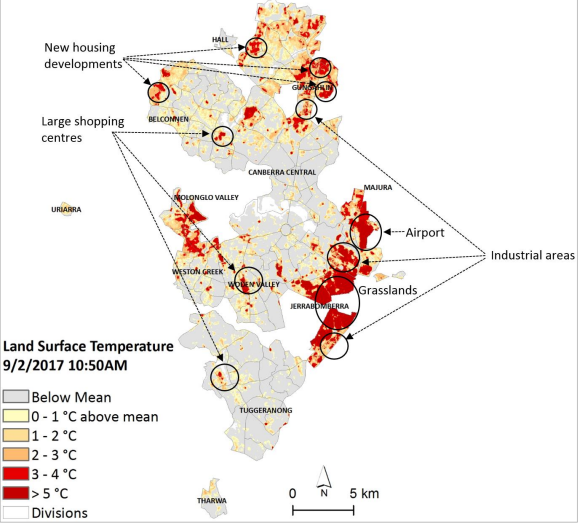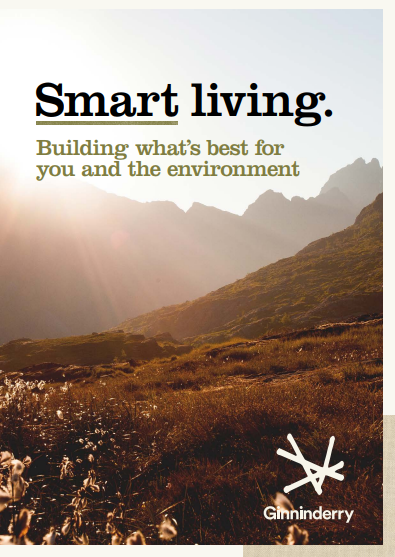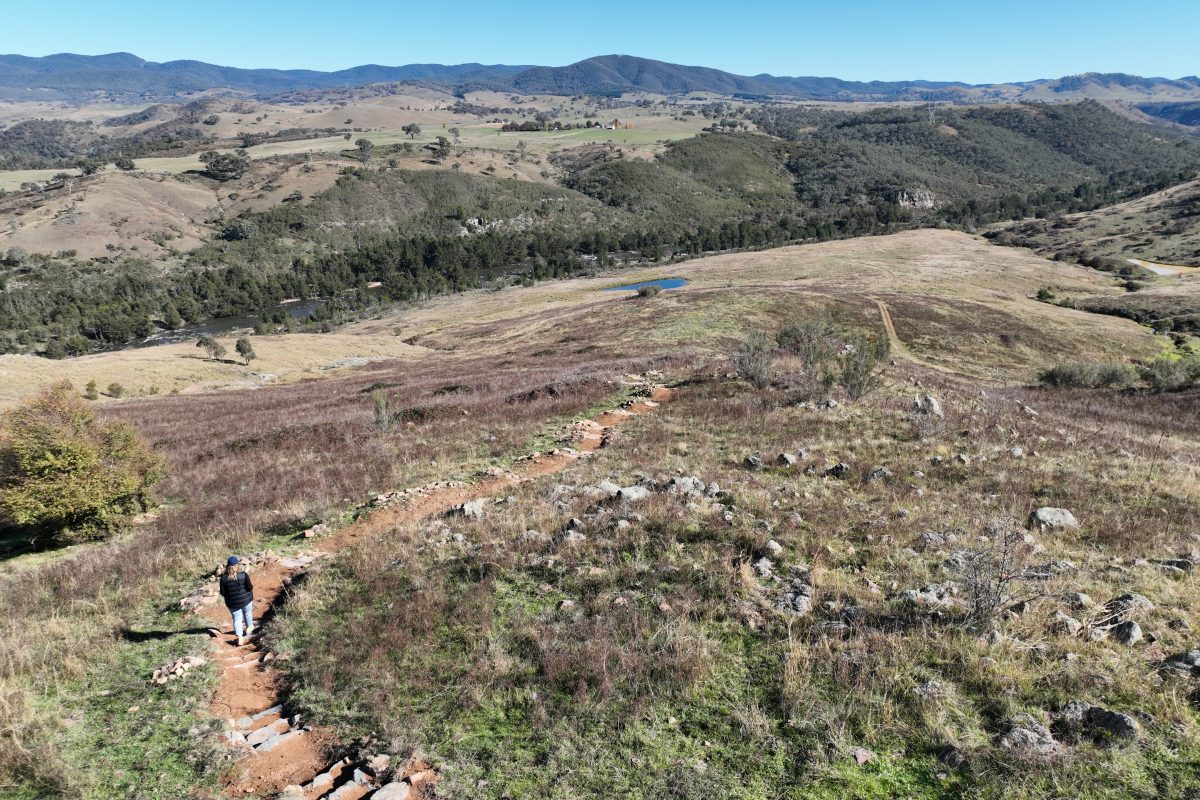Tackling the Urban Heat Island Effect
Late last year, the CSIRO published a report commissioned by the ACT Government exploring the impact of the Urban Heat Island Effect in Canberra. Its findings have been the subject of much discussion, most recently by Minister Shane Rattenbury on ABC Radio in Canberra.
Minister Rattenbury explained that urban heat islands occur when pavements, roads and buildings absorb the sun’s heat and radiate it back day and night, increasing the temperature and stopping urban areas from cooling down.
The CSIRO report found that Canberra as a city is around 8oC warmer in summer and 6oC warmer in winter than its surrounding rural areas. Areas with large expanses of impervious surfaces (such as rooftops, carparks and concreted areas) were much warmer again – sometimes up to 4-11oC hotter than the Canberra average! These sorts of surfaces are often found in commercial and industrial areas, major roads and intersections and new housing developments often get a bad rap for being sparse, desolate areas with not enough trees and “green infrastructure”.

So what can we do in Ginninderry to help mitigate the urban heat island effect?
Keep big trees
Canopy cover is one of the most effective ways to keep suburbs cool in summer. Trees help to shade footpaths, roads and hard-stand areas. We are lucky to have some very old, large trees at Ginninderry – some of which have been here since before European settlement (over 150 years old). We have worked very hard with our landscape architects to ensure that as many trees as possible could be kept within the new suburb plan for Ginninderry. We initially had only 45% of all trees within Stage One of the development being kept. By realigning roads, reshaping blocks, increasing public open space areas and realigning pathways, we have managed to keep 78% of all existing trees within Stage One.
Not only will we be keeping these important trees, but we are studying them too. Read more about out work with the Fenner School of Environment and Society at The Australian National University here and here.
The Conservation Corridor will also act as a large vegetated buffer to the suburban areas of Ginninderry, and any trees that at cut down on site will be moved to the Conservation Corridor or to our many ponds to provide extra habitat spaces.

Plant new trees
While new trees will take many decades to mature, the trees we plant now will outlive many of us.
Planting trees within suburbs is a lot more complicated than a lot of people realise – with regulations in place which limit soil depth, distances from paths and underground pipes and species selection.
In Stage One of the development (incorporating about 350 homes) we will plant more than 1,200 street trees – that’s not including all of the shrubs, understory plantings or grasses. These trees have been specifically selected to not only create shade, but to honour the existing character of Ginninderry whilst being easy to maintain.
We are also incorporating a sensory garden, a grove and community gardens within stage one to encourage residents to be part of their natural environment.

Incorporate Water
Water Sensitive Urban Design is a key feature of Ginninderry. Given our connection to the Murrumbidgee River and Ginninderra Creek, we have a responsibility to ensure that we treat our water on site carefully.
Incorporating water within our suburbs also helps to keep things cool. Air moving across water bodies provides cooler air to areas downwind. We have a number of large pond and wetland systems throughout Ginninderry, not only helping to improve the quality of the water being let back into the Murrumbidgee but to store water on site.
Angling roadways to allow runoff to collect in swales rather than just losing water down drains is also one way that we are using water onsite to minimise the urban heat island effect.
Using stormwater for irrigation is also a good way to cool the suburb in a more sustainable way. Many of our public open spaces are irrigated, not only to reuse water on site but to also help keep our trees healthy.
Use Cool Materials
Materials hold heat in different ways depending on what they are made of and their colour. Have you ever felt how hot a dark coloured brick gets in the sun in comparison to a light coloured brick?
By using materials that either don’t hold heat or get rid of their heat quickly, we can limit the urban heat island effect. Permeable paving is an easy substitute to traditional paving, concrete or asphalt. Permeable paving allows moisture to filter through to the soil underneath allowing it to cool quicker overnight.
The CSIRO Report also suggested trialling a number of new cool materials and products. We at Ginninderry would welcome the opportunity to test some of these emerging technologies in future stages!
Try it yourself
There are many things that you can do at home to minimise your urban heat island effect.
- Plant trees, shrubs and greenery
- Shade large walls and concreted areas
- Chose lighter coloured roof tiles or materials.
- Use permeable paving or porous materials (such as gravel) rather than concrete
- Make a water feature
For more information check out Smart Living brochure.



